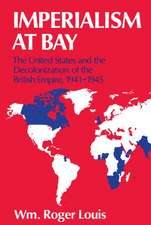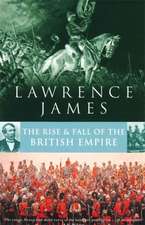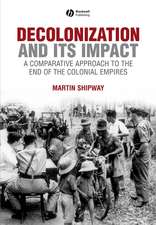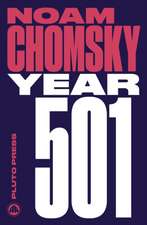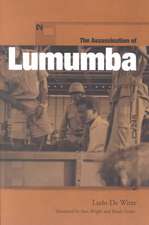Slave Society in the Danish West Indies
Autor G. Boodraj Editat de Neville A. T. Hall, B. W. Higmanen Limba Engleză Paperback – 4 sep 2000
Preț: 187.87 lei
Nou
Puncte Express: 282
Preț estimativ în valută:
35.95€ • 37.61$ • 29.86£
35.95€ • 37.61$ • 29.86£
Carte tipărită la comandă
Livrare economică 03-17 aprilie
Livrare express 26 februarie-04 martie pentru 120.62 lei
Preluare comenzi: 021 569.72.76
Specificații
ISBN-13: 9789764100294
ISBN-10: 9764100295
Pagini: 316
Dimensiuni: 152 x 229 x 18 mm
Greutate: 0.52 kg
Editura: University of the West Indies Press
ISBN-10: 9764100295
Pagini: 316
Dimensiuni: 152 x 229 x 18 mm
Greutate: 0.52 kg
Editura: University of the West Indies Press
Cuprins
Part 1 Empire without dominion - the Danish West Indies, 1671-1848: early colonization of St Thomas; Dutch cultural and commercial hegemony in St Thomas and St John; Danish settlement and English influences in St Croix; language, amelioration and national identity; the economics of foriegn domination; foreign domination and internal security; slaves and intermal security; deepened difficulties and challenges in the 19th century. Part 2 "The doom of the Almighty" - slaveowning ideology: the sanctions of ancient law; economic expediency; the curse of Ham; the civilizing mission; sin and salvation; racial arguments; the emergence of anti-slavery ideology. Part 3 "Part and parcel of property" - slaves and the law in the 18th century: Gardelin's Code of 1733; Frederik V's Reglement of 1755; subsequent concessions; Lindemann's Draft of 1783; abolition, amelioration and the law. Part 4 The rural milieu - slavery on the plantations: roots; plantation labour; housing; food and clothing; the world the slaves made; family, kinship and demographic survival. Part 5 the urban milieu - slavery in Christiansted, Frederiksted and Charlotte Amalie: domestics, hucksters, artisans; conditions of life; urban-rural interaction; communal interaction; social control; crime and punishment. Part 6 An oasis of humanity - independent slave activity: God; mammon; dances and other diversions; cultural creation. Part 7 Maritime maroons - grand maronage: early patterns; legilsation and diplomacy; new routes to freedom; strategies. Part 8 "An intermediate sort of class" - the emergence and growth of the freedman population: manumission; accumulation of wealth; population size and growth; restrictive legislation; gender and demographic concerns; social control. Part 9 "The rights and privileges of rational creatures" - the Freedman Petition of 1816: white attitudes; interaction with slaves; internal differentiation; challenging inequality; the Petition of 1816; after 1816. Part 10 Strangers within the gate - emigre freedmen in the 19th century: origins; white fears; emigres and the freedman community; the census of 1831. Part 11 "Religion and enlightenment" - education, amelioration and the road to abolition: early attempts at slave education; effects of metropolitan humanitarianism; Von Scholten's initiatives; metropolitan and local opposition; the 1846 Ordinance. Part 12 The victor vanquished - emancipation and its aftermath: the court martial; the trial evidence - prolegomenon to revolt; violence manque 2-3 July 1848; attitudes to the future - race and class; property destruction - 4-5 July 1848; women; differential responses.


